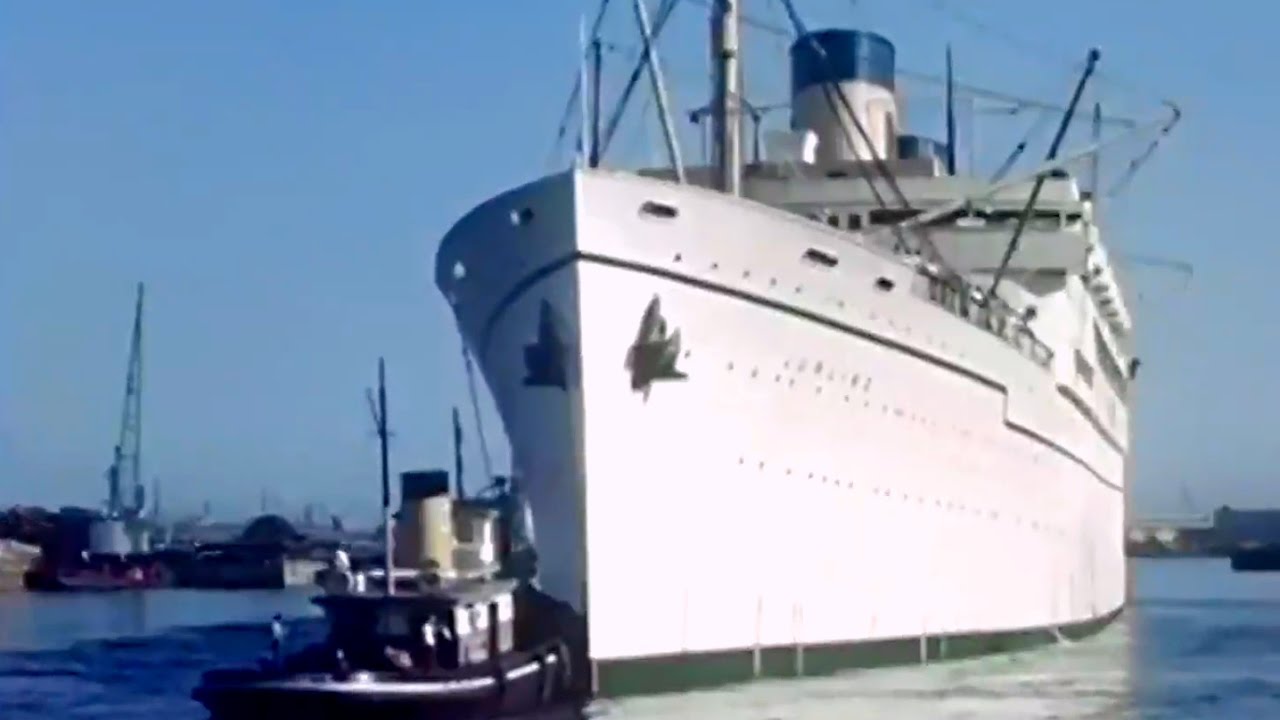Frith Films playlist:
more at
“SHOWS HOW THE PILOT GUIDES A SHIP THROUGH BAYS & CHANNELS, DIRECTING MEN IN THE PILOT HOUSE & ENGINE ROOM, IN THE TUGBOATS & ON DOCKS. GIVES DETAILS ON NAVIGATING INSTRUMENTS & SAFETY.”
Reupload of a previously uploaded film with improved video & sound.
Public domain film from the Library of Congress Prelinger Archives, slightly cropped to remove uneven edges, with the aspect ratio corrected, and one-pass brightness-contrast-color correction & mild video noise reduction applied.
The soundtrack was also processed with volume normalization, noise reduction, clipping reduction, and/or equalization (the resulting sound, though not perfect, is far less noisy than the original).
A pilot is a mariner who guides ships through dangerous or congested waters, such as harbors or river mouths. Pilots are expert ship handlers who possess in depth knowledge of local waterways. Pilots are responsible under the law and maritime custom for conducting the safe navigation of the vessel. With the exception of the Panama Canal, the pilot is only an advisor, as the captain remains in legal command of the vessel.
In English Law Article 742 of the Merchant Shipping Act 1894 defines a pilot as “any person not belonging to a ship who has the conduct thereof”. In other words someone, other than a member of the crew, who has control over the speed, direction and movement of the ship.
Pilotage is one of the oldest, least-known professions, it is as old as sea travel itself. The oldest recorded history dates back to the 7th century BC yet it is one of the most important in maritime safety. The economic and environmental risk from today’s large cargo ships makes the role of the pilot essential…
Their size and mass makes large ships very difficult to manoeuver; the stopping distance of a supertanker is typically measured in miles (kilometers) and even a slight error in judgment can cause millions of dollars in damage. For this reason, many years of experience in an operating area are required to qualify as a pilot. For example, the California Board of Pilot Commissioners requires that pilot trainees must have a master’s license, two years command experience on tugs or deep draft vessels, and pass a written exam and simulator exercise, followed by a period of up to three years training gaining experience with all types of vessel and docking facilities. Following licensing, pilots are required to engage in extensive continuing educational programs.
By far the most challenging part of any ship’s voyage is the passage through the narrow waterways that lead to port and the final docking of the ship. The pilot brings to the ship expertise in handling large vessels in confined waterways and expert local knowledge of the port. In addition to bringing local maritime expertise on board, unlike the vessel’s captain the pilot is insulated from the economic pressures (e.g., getting the ship from point A to point B on time, regardless of weather conditions, traffic, or other navigation issues) that can compromise safety. Instead of being part of the ship’s crew, pilots are employed locally and therefore act on behalf of the public rather than of the shipowners.
Normally the pilot joins an incoming ship at sea via helicopter or pilot boat and climbs a pilot ladder sometimes up 40 feet (~12 metres) to the deck of the largest container and tanker ships. Climbing the pilot ladder can be dangerous, even more so in rough seas considering that both the ship to be piloted and the pilot’s own vessel are usually both moving. With outgoing vessels, a pilot boat returns the pilot to land after the ship has successfully negotiated coastal waters.
Pilots specifically use pilotage techniques relying on nearby visual reference points and local knowledge of tides, swells, currents, depths and shoals that might not be readily identifiable on nautical charts without first hand experience in the waters in question.
Beyond the experience and training of regular ship’s captains, pilots also receive special, ongoing training to stay on top of their profession. Pilots are required by law in most major sea ports of the world for large ships.
However, masters of ships that call at only a few ports, such as a ferry, are issued a ‘pilot exemption certificate’. Ships with an exempt shipmaster or mate do not need to carry a pilot…
The Florida Alliance of Maritime Organizations reported that Florida pilots salaries range from US$100,000 to US$400,000 annually. This was similar to other US states with large ports. Columbia River bar pilots earn about US$180,000 per year. A 2008 review of pilot salary in the United States showed that pay ranged from about US$250,000 to over US$500,000 per year…

